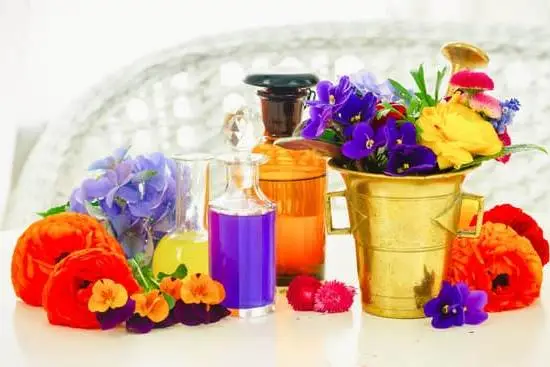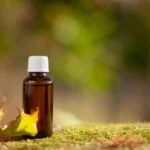Are you curious about the world of aromatherapy and how it can benefit your overall well-being? Aromatherapy is a holistic healing treatment that uses natural plant extracts, known as essential oils, to promote health and wellness. In this comprehensive guide to aromatherapy essential oils and diffusers, we will explore the various benefits of essential oils, understand the different types available, and learn how to use them safely and effectively.
Aromatherapy has been used for centuries as a natural remedy for various ailments, promoting relaxation, improving mood, and even supporting physical health. Essential oils are highly concentrated plant extracts that retain the natural aroma and beneficial properties of their source. When used in aromatherapy practices, these oils have the potential to positively impact our emotional, mental, and physical well-being.
Whether you are new to aromatherapy or looking to expand your knowledge on essential oils and diffusers, this guide aims to provide you with a comprehensive understanding of how aromatherapy works and how it can be integrated into your daily routine. From choosing the right essential oils for your needs to exploring various types of diffusers available in the market, this guide will equip you with the knowledge needed to make informed decisions for your aromatherapy journey.
Understanding the Different Types of Aromatherapy Essential Oils
Aromatherapy essential oils come in a wide variety, each with its own unique properties and potential benefits. Understanding the different types of essential oils is crucial when exploring aromatherapy as a holistic approach to health and well-being.
One of the most popular types of essential oils is lavender oil, known for its calming and relaxing properties. This oil is often used to relieve stress and anxiety, promote better sleep, and soothe minor skin irritations.
Meanwhile, tea tree oil is renowned for its antimicrobial and anti-inflammatory properties, making it a popular choice for treating acne, fungal infections, and even minor cuts and scrapes. Peppermint oil is another versatile option that can help alleviate headaches, improve digestion, and boost energy levels.
It’s important to note that some essential oils may not be suitable for certain individuals due to allergies or sensitivities. For example, people with sensitivity to citrus fruits may also have a reaction to citrus essential oils like lemon or orange. Additionally, some essential oils are not safe for use during pregnancy or breastfeeding.
In order to fully understand the different types of aromatherapy essential oils available, it’s beneficial to research each one individually before incorporating them into your wellness routine. Whether you’re seeking relaxation, relief from physical discomfort, or an immunity boost, there are numerous options to explore in the world of aromatherapy essential oils.
| Aromatherapy Essential Oil | Main Properties |
|---|---|
| Lavender oil | Calming, relaxing; relieves stress and anxiety |
| Tea tree oil | Antimicrobial, anti-inflammatory; treats acne and fungal infections |
| Peppermint oil | Alleviates headaches; improves digestion; boosts energy levels |
Choosing the Right Essential Oils for Your Needs
When it comes to choosing the right essential oils for your needs, it’s important to consider a few key factors. The first thing to think about is the specific mental or physical health benefits you are looking to achieve through aromatherapy. Different essential oils offer different properties, so knowing what you want to achieve can help narrow down your options.
Know Your Needs
Consider what you are hoping to address with aromatherapy. Are you looking for something uplifting and energizing, or perhaps calming and soothing? Maybe you’re in need of relief from congestion or muscle pain. Understanding your specific needs will help you select the most appropriate essential oils.
Research Thoroughly
Once you have identified your needs, take the time to research different essential oils and their benefits. For example, lavender is known for its calming properties, while eucalyptus is commonly used for respiratory support. Some oils have multiple benefits, so understanding their complexities can help in making an informed decision.
Consider Personal Preference
In addition to the therapeutic benefits of essential oils, it’s also important to consider personal preference. Some people may enjoy the scent of citrus oils, while others prefer floral or earthy aromas. Enjoying the scent of the oil is crucial as it enhances the overall aromatherapy experience.
By taking these factors into account and selecting the right essential oils for your needs, you can fully maximize the benefits of aromatherapy in your daily life.
The Science Behind Aromatherapy
Aromatherapy has long been used as a holistic approach to improving health and well-being. Essential oils, the key component of aromatherapy, are highly concentrated plant extracts that have been found to offer a wide range of therapeutic benefits. But how exactly do essential oils work to improve health and well-being? Let’s delve into the science behind aromatherapy and essential oils.
One of the primary ways in which essential oils work is through their aromatic compounds that stimulate the olfactory system. When inhaled, these compounds travel through the nose to the brain’s limbic system, which plays a role in emotions, behavior, memory, and sense of smell. This process can evoke emotional responses and positively impact mood and stress levels.
In addition to their effects on the limbic system, essential oils also have chemical properties that can interact with the body on a physiological level. For example, some essential oils have antibacterial or antiviral properties that can support the immune system when diffused into the air or applied topically.
Furthermore, certain essential oils contain compounds that can act as natural pain relievers or anti-inflammatory agents when used in massage or topical applications. Here are some key points about how essential oils work:
- Inhalation: Affects the brain and emotions
- Topical application: Can have physiological effects on the body
- Antibacterial and antiviral properties: Support immune function
- Pain relief and anti-inflammatory effects
Understanding the science behind how essential oils work is crucial for harnessing their full potential for health and well-being. By incorporating this knowledge into your aromatherapy practice, you can make informed choices about which essential oils and diffuser methods will best suit your individual needs.
Exploring Different Types of Diffusers
When it comes to diffusing essential oils for aromatherapy, there are several options available. Each type of diffuser works in a different way and offers unique benefits. The most common types of diffusers include nebulizing diffusers, ultrasonic diffusers, heat diffusers, and evaporative diffusers.
Nebulizing diffusers are considered one of the most potent types of diffusers as they do not require heat or water to disperse the essential oils into the air. Instead, they use an atomizer to break down the oil into tiny particles that are then released into the air. This type of diffusion allows for maximum therapeutic benefits from the oils.
Ultrasonic diffusers are another popular choice for aromatherapy enthusiasts. These diffusers use water and ultrasonic vibrations to create a fine mist that contains the dispersed essential oils. The mist is released into the air, providing both a pleasant aroma and added humidity to the room. Ultrasonic diffusers are also known for their ability to preserve the integrity of the essential oils’ therapeutic properties.
Heat diffusers, on the other hand, use heat to warm and evaporate the essential oils into the air. While these diffusers are simple and affordable, they may alter the chemical composition of some essential oils, potentially reducing their therapeutic benefits.
Evaporative diffusers work by allowing air to pass over a pad or filter containing the essential oils, causing them to evaporate and disperse into the surrounding environment. These types of diffusers are often portable and can be used without electricity, making them convenient for travel or small spaces.
| Type of Diffuser | Description |
|---|---|
| Nebulizing Diffuser | Uses an atomizer to break down oils without heat or water |
| Ultrasonic Diffuser | Uses water and ultrasonic vibrations to disperse fine mist containing essential oils |
| Heat Diffuser | Uses heat to warm and evaporate essential oils into the air but may alter their composition |
| Evaporative Diffuser | Allows air to pass over a pad/filter containing essential oil – often portable and does not require electricity |
Tips for Using Essential Oils and Diffusers Safely
Understanding Essential Oil Dilution
When using essential oils, it is crucial to understand the concept of dilution. Essential oils are highly concentrated substances and should never be applied directly to the skin without dilution. The most common dilution ratio is 2-3 drops of essential oil per teaspoon of carrier oil, such as coconut oil or almond oil. This helps to reduce the risk of skin irritation and sensitization.
Proper Ventilation
It’s important to ensure that the room where you are using a diffuser is well-ventilated. While aromatherapy can have numerous benefits, inhaling too much essential oil vapor in a poorly ventilated space can cause headaches, dizziness, or nausea. Opening windows or using a fan can help to disperse the aroma and prevent any adverse effects.
Safe Storage and Handling
Essential oils should be stored in dark glass bottles away from direct sunlight, heat, and moisture to preserve their potency. Additionally, they should be kept out of reach of children and pets. When handling essential oils, it’s important to use proper safety precautions such as wearing gloves and washing hands thoroughly after use. This helps to prevent accidental exposure or ingestion.
By following these best practices for using essential oils and diffusers safely, you can enjoy the many benefits of aromatherapy while minimizing any potential risks or side effects. Always consult with a qualified aromatherapist or healthcare professional if you have any concerns or questions about using essential oils.
Aromatherapy Essential Oil Blends
When it comes to aromatherapy, essential oil blends can provide a wide range of benefits, from relaxation and stress relief to improved focus and energy. By combining different essential oils, you can create custom blends that target specific needs and enhance the overall therapeutic effects. Here are some popular essential oil blends and their specific benefits:
- Lavender and Chamomile: This combination is perfect for promoting relaxation and relieving stress. Both oils have calming properties that can help ease tension and promote a sense of calmness.
- Peppermint and Eucalyptus: If you’re looking for an invigorating blend, try mixing peppermint and eucalyptus essential oils. This combination can help open up the airways, improve mental clarity, and boost energy levels.
- Lemon and Orange: For a mood-boosting blend, consider combining lemon and orange essential oils. These citrusy oils are known for their uplifting properties and can help improve mood and increase feelings of positivity.
Creating your own essential oil blends allows you to customize the aromatherapy experience to suit your specific needs. Whether you’re looking to create a soothing atmosphere at home or boost your focus during work hours, experimenting with different essential oil combinations can help you achieve the desired effects.
It’s important to note that when creating your own blends, it’s crucial to dilute the essential oils properly to ensure safe usage. Always follow recommended guidelines for blending ratios and perform a patch test before using any new blend topically. With a little research and experimentation, you can discover the perfect aromatherapy blends that work best for you.
How to Incorporate Aromatherapy Into Your Daily Routine
Incorporating aromatherapy into your daily routine can be both enjoyable and beneficial for your overall well-being. Whether you are looking to improve your mood, reduce stress, or simply create a more calming environment, there are countless ways to incorporate essential oils and diffusers into your daily life.
One of the simplest ways to use aromatherapy in your daily routine is by adding a few drops of your favorite essential oil to a diffuser. Whether you place it in your bedroom for a peaceful night’s sleep, or in your living room for a relaxing evening, using a diffuser can help set the tone for any part of your day.
Another practical way to incorporate aromatherapy into your daily routine is by creating custom blends of essential oils. By combining different oils known for their specific benefits, such as lavender for relaxation or peppermint for an energy boost, you can tailor the aromatherapy experience to meet your individual needs.
Overall, incorporating aromatherapy into your daily routine can have numerous benefits for both your physical and mental well-being. By understanding the different types of essential oils, choosing the right ones for your needs, and using diffusers and custom blends effectively and safely, you can easily make aromatherapy an integral part of your daily life. So why not give it a try and see how it can enhance your overall quality of life?
Frequently Asked Questions
What Essential Oils Should Not Be Used in a Diffuser?
Some essential oils, such as cinnamon, oregano, and thyme, should not be used in a diffuser due to their strong and potentially irritating properties. These oils can cause respiratory issues or skin sensitivities when dispersed into the air.
What Are the 10 Best Essential Oils to Try for Aromatherapy?
The best essential oils to try for aromatherapy include lavender, tea tree, eucalyptus, peppermint, lemon, rosemary, bergamot, chamomile, ylang-ylang, and frankincense. Each of these oils offers unique benefits such as relaxation, pain relief, stress reduction, and improved mental clarity.
Can You Use Tap Water in a Diffuser?
It is generally recommended to use distilled water in a diffuser rather than tap water. Tap water may contain minerals or impurities that can build up in the diffuser over time and affect its performance. Using distilled water helps to maintain the longevity of the diffuser and prevent any potential issues related to mineral buildup.

Are you looking for a natural way to improve your health and wellbeing?
If so, aromatherapy may be the answer for you.





